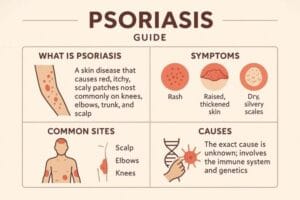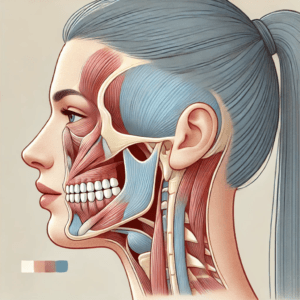Understanding Migraine: Types, Treatments, and Future Outlook
Table of Contents

Understanding Migraine: Types, Treatments, and Future Outlook
Living with migraine is much more than enduring a severe headache; it’s a complex neurological disorder that profoundly impacts daily life. For many, a migraine attack can feel like their brain is hosting a chaotic, unwanted party, bringing with it intense throbbing pain, often on one side of the head. But the misery doesn’t stop there. This condition often arrives with a host of other debilitating symptoms like nausea, vomiting, and a profound intolerance to light, sound, or strong smells. We know it can make functioning impossible, forcing individuals to retreat from work, family, and social engagements. Medical experts even use a detailed classification system to categorize the many ways migraine can manifest, acknowledging its widespread and varied impact on millions across the U.S. Understanding this intricate condition is the first step toward finding relief and reclaiming our lives.
What Exactly Is a Migraine Anyway?
When we talk about migraine, we’re not describing your average headache after a stressful day. It’s a distinct neurological condition marked by recurrent, often severe headaches that can feel like an internal drum solo. This isn’t just pain; it’s an entire sensory assault. Alongside the head pain, we often experience symptoms such as nausea, sometimes leading to vomiting, and an overwhelming sensitivity to light (photophobia), sound (phonophobia), or even certain odors (osmophobia). Imagine trying to focus when every flicker of light, every whispered word, and every faint smell intensifies your discomfort. Does that sound like a typical headache to you?
The International Classification of Headache Disorders (ICHD) provides a clear framework for understanding these different expressions of migraine. For many, a migraine attack unfolds in identifiable stages, though not everyone experiences all of them:
- Prodrome: These are the subtle warning signs that can appear hours or even days before the main headache hits. You might notice mood changes, neck stiffness, unusual food cravings, increased yawning, or even feel unusually tired or irritable. It’s like a quiet prelude to the storm.
- Aura: About a quarter to a third of people experience aura. These are temporary neurological symptoms that usually occur just before or during the headache phase. Visual auras are most common—think flashing lights, zigzag lines, shimmering spots, or even temporary blind spots. Others might feel tingling or numbness, or experience temporary speech difficulties.
- Headache Phase: This is where the intense, throbbing pain typically takes over, often on one side of your head. It’s usually moderate to severe and often worsens with physical activity. This phase can last anywhere from 4 to 72 hours if left untreated.
- Postdrome: Often called the “migraine hangover,” this phase follows the headache. We might feel drained, fatigued, have trouble concentrating, or experience lingering neck stiffness. It can last for a day or two, leaving us feeling completely wiped out.
Recognizing these phases and symptoms is crucial for better managing migraine and seeking appropriate care.
A Journey Through Time: Migraine History and Evolution
Our understanding of migraine has come a long way, transforming from ancient mystique to modern neuroscience. Imagine living 3,000 BCE and trying to articulate the crushing pain and visual disturbances of a migraine attack. Early Egyptians and Sumerians described what they called “sick headaches,” often attributing them to evil spirits. Their remedies could be drastic—some even practiced trepanation, drilling holes in skulls to release these perceived malevolent forces. Others attempted more unusual cures, like strapping clay crocodiles to a patient’s head, hoping for divine intervention or perhaps, a primitive form of scalp compression.
Greco-Roman Glimmers of Insight (c. 460 BCE – 200 CE)
Hippocrates, often hailed as the father of medicine, made a significant leap around 460 BCE. He observed the characteristic one-sided pain, coining the term “hemicrania,” which is the very root of our modern word “migraine.” He also noted the peculiar visual auras, describing them as “something shining like a light,” and even suggested that vomiting might offer some relief, a observation many migraine sufferers still recognize today. Later, the Roman physician Galen refined the term “hemicrania” and linked the condition to the body’s humoral theory, believing imbalances in bodily fluids were the cause. During this era, treatments often involved bloodletting or herbal concoctions.
Medieval Mysticism to Scientific Sniffs (c. 500 CE – 18th Century)
For centuries, the understanding of migraine remained somewhat shrouded in mystery, with remedies ranging from opium poultices to, believe it or not, dead millipedes. However, the 17th century brought a turning point with Thomas Willis, who gave us the term “neurology.” Willis made detailed observations, linking migraines to factors like genetics, weather changes, and certain foods. He was one of the first to describe menstrual migraines and even suggested coffee as a potential treatment—a recommendation many of us still embrace! The 18th century saw Erasmus Darwin proposing a vasodilation theory, advocating for centrifugation to alleviate head pressure.
Modern Medicine Steps Up (19th and 20th Centuries)
The 19th century further illuminated our understanding, with Edward Liveing describing migraine as a “nerve storm” originating in the brain. William Gowers, another pioneer in neurology, supported this neurogenic theory and explored cannabis and caffeine for treatment. The 20th century delivered true game-changers:
- Ergotamine, isolated in 1918 and available in the 1920s, marked the first specific drug for acute migraine attacks, working by constricting blood vessels and increasing serotonin.
- The 1960s saw the introduction of beta-blockers, initially used for heart conditions, which were found to prevent migraine frequency, becoming the first approved preventive medications.
- The 1990s brought a revolution with triptans (like sumatriptan), specifically designed to target serotonin receptors, effectively blocking pain signals and reducing inflammation.
This historical journey highlights our persistent quest to unravel the complexities of migraine, paving the way for the sophisticated treatments available today.
Migraine Today: Types and Treatment Approaches
Today, we recognize that migraine is not a singular experience but a spectrum of conditions, each with its unique characteristics. Understanding the various migraine types is essential for an accurate diagnosis and effective treatment plan.
The Main Classifications:
- Migraine Without Aura: This is the most common form, affecting about 75% of individuals. It’s characterized by throbbing pain, often on one side of the head, accompanied by nausea, and sensitivity to light and sound, but without the pre-headache neurological symptoms. We might experience intense pain that worsens with activity.
- Migraine With Aura: Roughly a quarter to a third of us experience this type. Before or during the headache, we might see flashing lights, zigzag lines, or even temporary blind spots. Other auras can include tingling, numbness, or even speech difficulties.
Other Recognized Migraine Types:
- Chronic Migraine: If you experience headaches on 15 or more days a month for at least three months, with eight of those days having migraine features, you might have chronic migraine. It’s a persistent, debilitating problem that significantly impacts quality of life.
- Vestibular Migraine: This type can leave us feeling dizzy, off-balance, or experiencing vertigo, often without a significant headache. It’s a trickster, making us feel unsteady.
- Hemiplegic Migraine: A rare and often frightening type, it causes temporary weakness or paralysis on one side of the body, sometimes mimicking a stroke. It can even run in families.
- Retinal Migraine: Here, vision in one eye becomes blurry or temporarily disappears, sometimes with shimmering lights, before or during the headache.
- Menstrual Migraine: Often more intense and resistant to treatment, these migraines are linked to hormonal fluctuations, typically occurring just before or during a menstrual period.
- Silent Migraine (or Migraine Without Headache): We experience the aura symptoms—visual disturbances, tingling—but thankfully, the severe headache pain never fully arrives.
- Other less common types include Abdominal Migraine (often seen in children) and Migraine with Brainstem Aura, which involves symptoms like vertigo, slurred speech, or double vision.
Pinpointing the Problem: Diagnosis
Diagnosing migraine largely involves a detailed discussion with our healthcare provider. We act like detectives, carefully describing our symptoms, their frequency, duration, and any accompanying factors. Headache diaries and questionnaires are surprisingly helpful tools in this process, allowing us to track patterns and provide crucial information. Imaging tests like MRI or CT scans are usually performed only to rule out other serious conditions.
Our Modern Arsenal: Treatment Approaches
Today’s migraine treatment landscape offers a range of options, both to stop an attack once it starts and to prevent future ones.
- Acute Relief: When an attack strikes, we reach for quick fixes.
- Triptans have been a cornerstone for years, targeting serotonin receptors to relieve pain.
- Newer options like “gepants” (e.g., Ubrogepant, Rimegepant, Zavegepant nasal spray) and “ditans” (e.g., Lasmiditan) offer effective relief without causing blood vessel constriction, making them suitable for individuals with cardiovascular concerns.
- Simple painkillers and anti-nausea medications also play a role in managing immediate symptoms.
- Preventive Power: These treatments are taken regularly to reduce how often and how severely migraines hit.
- CGRP-targeted therapies (e.g., Erenumab, Fremanezumab, Galcanezumab, Eptinezumab) are a revolutionary class of medications. They block a specific protein involved in pain signaling, profoundly changing lives for many. Oral gepants like Atogepant and Rimegepant can also be used for prevention.
- Botox injections can be highly effective for chronic migraine.
- Older but still valuable medications like beta-blockers, antidepressants, and anti-seizure drugs also serve as preventive options.
- Tech-Assisted Help: Non-invasive neuromodulation devices (like Cefaly or Nerivio) stimulate nerves to offer drug-free acute and preventive relief.
- Lifestyle Hacks: We emphasize the power of lifestyle adjustments. Consistent sleep, a balanced diet, regular exercise, and effective stress management are not just recommendations; they are foundational pillars of migraine management. Learning your specific triggers is like discovering your migraine’s unique weakness.
- Mind-Body Boost: Complementary therapies such as acupuncture, biofeedback, and cognitive behavioral therapy can provide additional support, helping us manage chronic pain and stress.
Finding the right combination of these strategies often requires patience and collaboration with our healthcare team, but the goal is always to achieve better control over this challenging condition.
Navigating the Challenges: Migraine Debates and Misunderstandings
Despite significant advancements, the world of migraine is still rife with complexities, leading to ongoing debates and widespread misunderstandings that can frustrate those of us living with the condition.
Mistaken Identity: The Challenge of Accurate Diagnosis
One of the most pressing issues is the frequent misdiagnosis of migraine. We know our symptoms are debilitating, but often, our condition is confused with other types of headaches or even more serious health problems.
- Tension vs. Migraine: Migraines are frequently mistaken for simple tension headaches, which are typically less severe and lack the associated symptoms like nausea and light sensitivity. This leads to ineffective over-the-counter treatments that offer little relief.
- Sinus vs. Migraine: Many individuals are initially misdiagnosed with sinus headaches because migraine symptoms, such as facial pain and pressure, can overlap. However, true sinus headaches are usually accompanied by infection symptoms like fever and nasal congestion. It’s frustrating when our genuine pain is dismissed as a common cold.
- Stroke Look-alikes: The aura phase of migraine, particularly hemiplegic migraine (which causes temporary weakness on one side of the body), can terrifyingly mimic the symptoms of a stroke. This necessitates urgent medical evaluation to rule out a more life-threatening condition, adding to the stress of an attack.
- Dismissed as “Just Stress”: Far too often, especially for women, our migraine symptoms are unfairly attributed solely to stress or anxiety. While stress can be a trigger, it’s crucial to understand that migraine is a distinct neurological disease, not merely a psychological reaction. This dismissal can lead to a profound sense of invalidation and delays in appropriate treatment.
Classification Quandaries: Defining the Indefinable?
Even among experts, debates persist regarding the precise classification of certain migraine types, particularly chronic migraine (CM) and its relationship with medication overuse headache (MOH).
- Chronic Migraine Criteria: The definition of chronic migraine (headaches on 15 or more days a month for at least three months) has been criticized for being potentially too broad, grouping together people whose experiences and underlying causes might be quite different. This ambiguity can impact how research is conducted and how treatments are applied.
- Medication Overuse Headache (MOH): It’s a cruel irony that the very medications we take for relief can sometimes lead to more frequent headaches. The criteria for diagnosing MOH have evolved, and the complex interplay between chronic migraine and MOH is still a hot topic of discussion, making treatment decisions challenging.
Treatment Tussles: What Works Best, and at What Cost?
The path to effective migraine treatment is rarely straightforward, sparking debates about appropriate therapies.
- Opioids: A Big No-No: While they might seem like a quick fix, doctors generally advise against using strong opioids for migraine. Why? They can actually make headaches worse in the long run, contribute to medication overuse headache, and carry risks of dependency. We want sustainable relief, not temporary masking that creates new problems.
- The Cost of Innovation: Newer, highly effective CGRP-targeted drugs have revolutionized treatment, offering many a quality of life they hadn’t imagined. However, their high cost and the labyrinthine insurance approval processes can create significant barriers, making these life-changing therapies inaccessible for some. We often wonder, why is effective relief so hard to get?
- Botox and Hormones: Debates also surface regarding the efficacy of Botox injections for chronic migraine in all individuals, and questions about the risks of hormonal birth control for women who experience migraine with aura. This constant reassessment underscores the complex, individualized nature of migraine management.
Understanding these ongoing discussions and challenges is vital. It highlights the need for continued research, open communication with healthcare providers, and a commitment to personalized care to navigate the tricky business of migraine.
Looking Ahead: The Future of Migraine Care
The horizon for migraine sufferers is brighter than ever, with science continuously chipping away at the complexities of this condition. We are on the cusp of truly personalized medicine, driven by groundbreaking research and innovative technologies.
More Targeted Weapons in Our Arsenal:
The revolution in CGRP-targeted therapies continues at a rapid pace. We are seeing new formulations and delivery systems for these life-changing medications, such as faster-acting nasal sprays for acute relief. Imagine stopping an attack almost instantly, without the wait time of oral medications.
- PACAP: The Next Frontier? Scientists are now intensely focused on another brain peptide, PACAP (pituitary adenylate cyclase-activating polypeptide), which plays a role similar to CGRP in triggering migraine. For those who haven’t found full relief with CGRP blockers, PACAP-targeting drugs could represent the next generation of migraine heroes. Clinical trials for PACAP monoclonal antibodies are showing promising results, suggesting new avenues for prevention.
- Unlocking Brain Fluid Secrets: Fascinating research from institutions like the University of Rochester is revealing how the “wave” of brain activity during an aura can move cerebrospinal fluid, releasing specific proteins that then trigger pain. Identifying these proteins is opening up entirely new drug targets, allowing us to suppress sensory nerve activation even before the headache hits. This research also explains why migraine pain often affects only one side of the head, as these pain-inducing proteins travel to the trigeminal ganglion on the same side.
Genetic Clues and Personalized Plans:
With advancements in genetics and biomarker research, we are gaining a much deeper understanding of individual migraine susceptibility. This means future treatments could be ultra-personalized, tailored to your unique genetic makeup and specific migraine pathways. No more one-size-fits-all approaches; instead, we can look forward to customized treatment plans designed for optimal relief.
Smarter Devices for Drug-Free Relief:
Neuromodulation devices, which use electrical or magnetic stimulation to calm overactive nerve signals, will continue to become more sophisticated and widely available. These drug-free options offer immense potential for both acute and preventive management, especially for those who prefer to avoid medication side effects or have contraindications. We expect these gadgets to become even more intuitive and effective in the coming years.
Beyond the Headache: Comprehensive Symptom Management:
Future research isn’t just focused on pain relief. Scientists are increasingly investigating ways to tackle the entire constellation of miserable migraine symptoms—nausea, brain fog, extreme fatigue, dizziness, and heightened sensitivity—even before the headache begins. Imagine preventing the entire experience, not just alleviating the pain.
The future is brimming with hope for those living with migraine. Continuous scientific exploration, advanced therapies, and personalized treatment strategies are bringing us closer to a world where we can better manage this complex neurological condition and reclaim a higher quality of life.
Frequently Asked Questions About Migraine
Q1: What distinguishes a migraine from a regular headache?
Migraine is a complex neurological disorder, not just a severe headache. It often involves intense throbbing pain, usually on one side of the head, accompanied by other symptoms like nausea, vomiting, and extreme sensitivity to light and sound. Regular headaches are generally less severe and lack these associated neurological features.
Q2: What are the most common types of migraine?
The two most common migraine types are Migraine Without Aura (formerly common migraine), which involves headache pain without preceding neurological symptoms, and Migraine With Aura (formerly classic migraine), where visual disturbances (like flashing lights) or other sensory changes occur before or during the headache.
Q3: How is chronic migraine diagnosed?
You receive a chronic migraine diagnosis if you experience headaches on 15 or more days per month for at least three months, with at least eight of those days having migraine features such as pulsating pain, moderate to severe intensity, and sensitivity to light or sound.
Q4: What new treatments are available for migraine?
Recent migraine treatment advancements include CGRP-targeted therapies (monoclonal antibodies and gepants) for both acute relief and prevention, ditans (like lasmiditan) for acute attacks, and advanced neuromodulation devices. These offer more specific ways to manage migraine symptoms and frequency.
Q5: Can lifestyle changes help manage migraine symptoms?
Absolutely. Lifestyle adjustments are a crucial part of migraine management. Consistent sleep, a balanced diet, regular exercise, and effective stress management can significantly reduce the frequency and severity of attacks. Identifying and avoiding your personal triggers is also highly beneficial.
Q6: Why are some migraines mistaken for other conditions?
Migraine diagnosis can be tricky because its symptoms, such as facial pain, can mimic sinus headaches, or neurological aura symptoms can resemble a stroke. It’s also often dismissed as “just stress,” leading to misdiagnosis and delays in appropriate care.
Q7: What is the long-term outlook for people living with migraine?
While migraine remains a chronic condition for many, the long-term outlook is improving. With new and emerging therapies, personalized treatment plans, and a deeper understanding of the condition, individuals can achieve better control over their migraine symptoms and significantly enhance their quality of life.
For more information, visit: National Institute of Neurological Disorders and Stroke (NINDS)














Post Comment